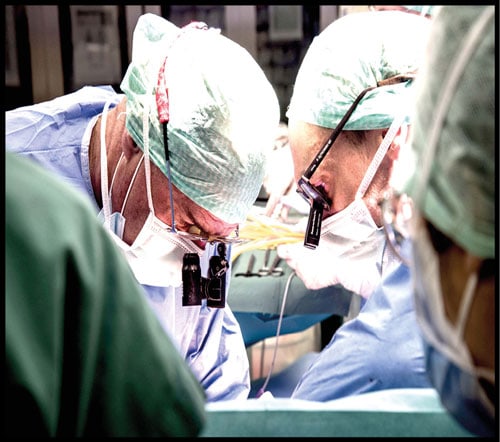In a first, the Liver4Life research team in Zurich, Switzerland, reports the successful transplantation of a liver stored in a perfusion machine for three days into a human recipient, who is doing well one year later. Organ transplantation is a very complicated medical procedure. The organ has to be compatible with the recipient, and the process also involves moving a live organ from donor person to recipient and maintaining the organ in working order until the surgery.
The traditional method of moving transplant organs involves storing them at a very low temperature. However, this process has a time limit and may damage organ tissues. For this reason, scientists are working on new ways to keep donated organs viable without the use of extreme cold. One such group is the Liver4Life research team in Zurich, Switzerland, who used a perfusion machine to keep a human liver alive for three days.
Doctors then implanted the liver into a human patient, who now, one year after the procedure, is reportedly doing well. The results of this procedure recently appeared in the journal Nature BiotechnologyTrusted Source. According to the United Network for Organ Sharing, more than 41,000 transplants occurred in 2021 in the United States. The liver is the second most commonly transplanted organ after the kidney.
Every 9 minutes, a person is placed on an organ transplant waiting list. Although UNOS reports the percentage of people donating their organs has increased, there is still a shortage of available organs. And an average of 17 people die every day waiting for an organ transplant. Traditionally, harvested organs moved for transplantation are kept at a very cold temperatureTrusted Source. This process is called cold ischemia timeTrusted Source. Different organs can be kept in cold storage for different lengths before their tissues begin to break down. For example, a heart’s cold ischemia time is 4–6 hours, while a kidney lasts much longer, for 24–36 hours. The liver can be kept in cold storage between 8 and 12 hours.
In regards to the liver, past research shows a prolonged cold ischemia time may hurt liver transplantation. Other researchTrusted Source found that cold ischemia time extends a patient’s post-transplantation hospital stay. Researchers are studying perfusion machines as an alternative method of storing organs outside the body. The machine mimics the functions of the body’s heart and lungs, pumping blood and oxygen into the organ.
Additionally, medical professionals administer a cocktail of hormones and nutrients to the organ, just like it would receive from the intestines and pancreas in the body.










